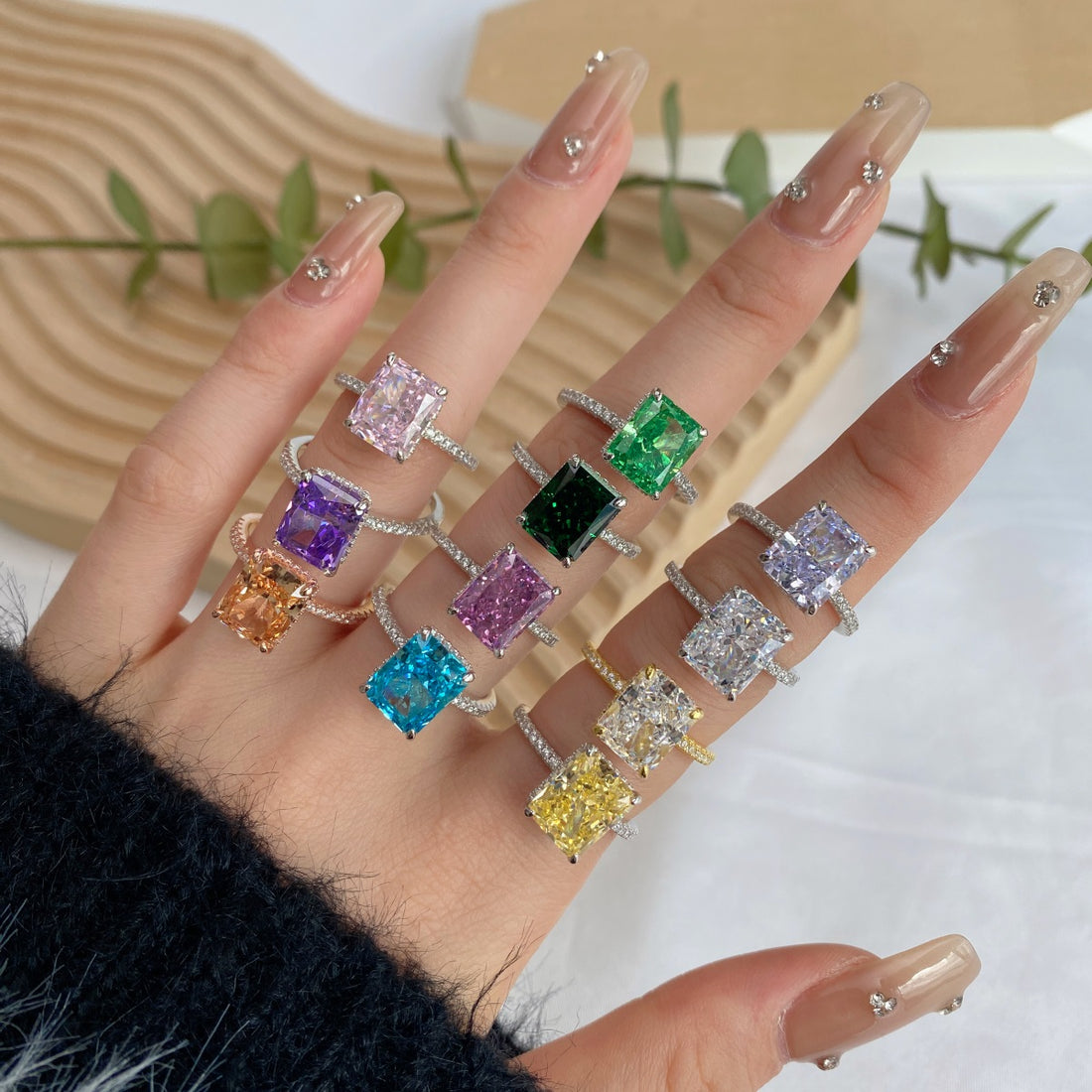
Everything you need to know about cubic zirconias and how to care for them
Share
-
What is cubic zirconia? Cubic zirconia is a synthetic gemstone commonly used as a diamond substitute in jewelry. It is a crystalline form of zirconium dioxide. Cubic zirconias are popular due to their hardness, clarity, and brilliant appearance, which is similar to diamonds.
-
What are the classifications of cubic zirconia? Cubic zirconias are classified based on various factors such as quality, purity, color, and cut.
Classification based on quality:
- 5A: 5A cubic zirconias are the highest quality synthetic gemstones. They are characterized by very high clarity, excellent cut, and impressive brilliance. They are the closest to diamonds in terms of sparkle and light reflection.
- 8A: 8A cubic zirconias are also high quality but rank slightly lower in the hierarchy than 5A. They also have impressive sparkle and brilliance but may slightly lag behind 5A in terms of light reflection and sharpness.
- Standard Cubic Zirconias: This is a general term for cubic zirconias of average quality. They may have slightly more inclusions or imperfections compared to higher grades.
- Other classifications (B, C, etc.): There are also lower grades that may have lower clarity or cut quality. They are usually less expensive and may be used in lower quality jewelry.
- What damages cubic zirconia? Cubic zirconias, especially those of 5A and 8A quality, are popular diamond imitations made from zirconium dioxide. Though durable, they can be damaged due to various factors. Here are a few factors that can affect the condition of 5A and 8A cubic zirconias:
- Friction and scratches: Cubic zirconia, although harder than many other minerals, can be scratched or abraded due to contact with hard surfaces.
- Contact with chemicals: Harsh chemicals found in some cosmetics, perfumes, or cleaning agents can adversely affect the surface of cubic zirconia.
- Impacts and mechanical damage: Strong impacts can cause chipping or other damage to the surface of cubic zirconia.
- Contact with hot substances: Cubic zirconia may be sensitive to extreme temperatures, so contact with hot substances can cause damage.
- Moisture and humid environment: Prolonged contact with moisture can affect the surface condition of cubic zirconia.
- Oxidation and corrosion: While cubic zirconia does not oxidize in the same way, it may be sensitive to reactions with certain chemicals.
- How to care for cubic zirconia? Although 5A and 8A cubic zirconias are durable, they still require some care to maintain their beauty. Here are a few tips on how to care for cubic zirconias:
- Avoid contact with chemicals: It is advisable to avoid cubic zirconia contact with aggressive chemicals such as perfumes, cosmetics, hair sprays, and cleaning agents. They can affect the shine and appearance of the stone.
- Avoid contact with hot substances: Avoid extreme temperatures as sudden changes can affect the structure and appearance of cubic zirconia.
- Caution against impacts and scratches: While cubic zirconia is relatively durable, it can be damaged by impacts or friction with hard objects.
- Regular cleaning: You can clean cubic zirconia gently with a soft toothbrush and mild soap. Avoid using cleaning agents that may contain chemicals that are too aggressive for the stone.
- Avoid moisture contact: Try to avoid contact with moisture, which can affect the stone's surface.
- Storage in appropriate conditions: When not wearing jewelry with cubic zirconia, store it in a moisture-free place, away from other metals that may potentially cause chemical reactions. The best solution is to store it in special boxes, which you can purchase in our store!
